
How to Use Adafruit NeoPixel Jewel: Examples, Pinouts, and Specs
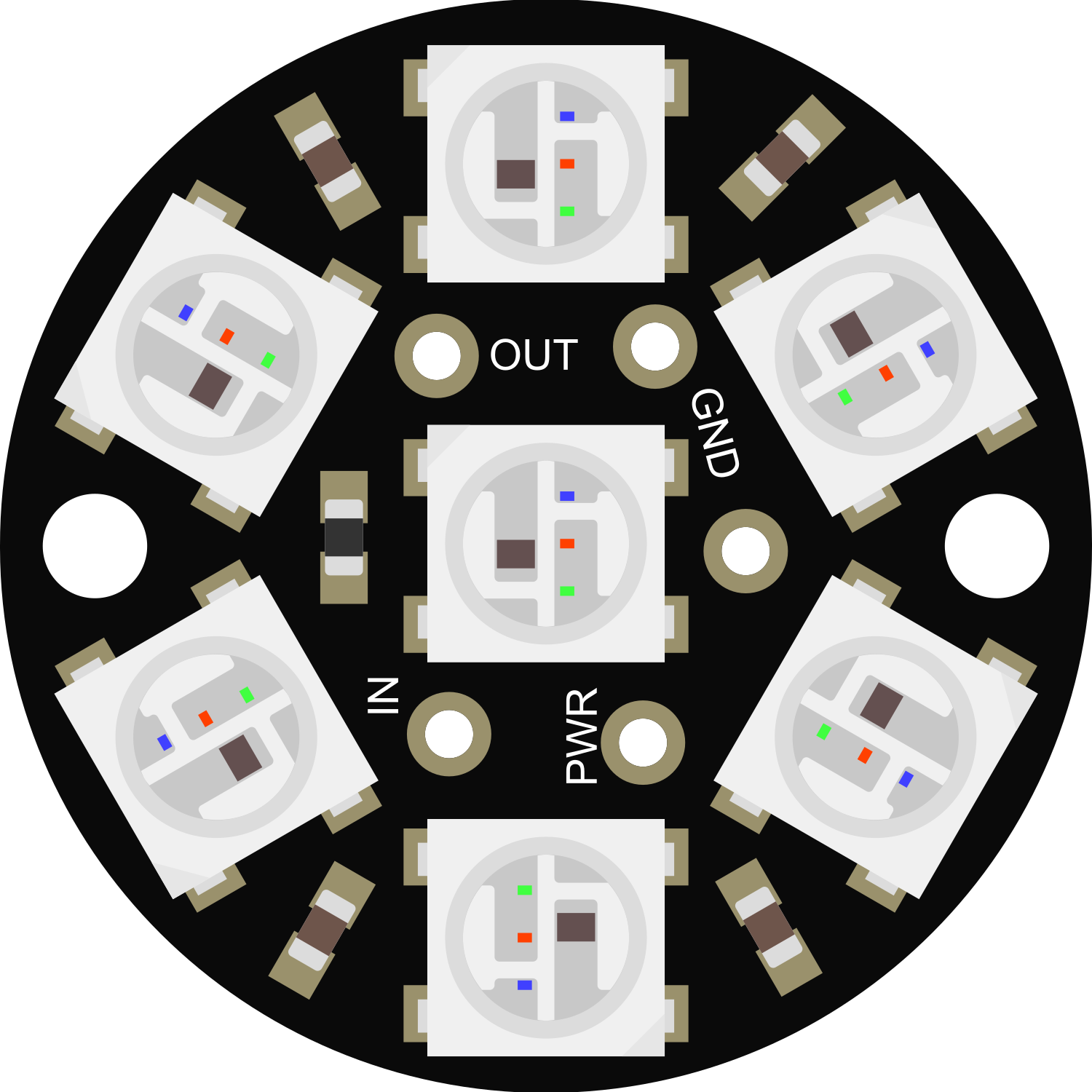
 Design with Adafruit NeoPixel Jewel in Cirkit Designer
Design with Adafruit NeoPixel Jewel in Cirkit DesignerIntroduction
The Adafruit NeoPixel Jewel is a compact, circular LED module that features seven individually addressable RGB LEDs. These LEDs are based on the WS2812 or the upgraded WS2812B, which integrate the control circuit and RGB chip into a single 5050 (5mm x 5mm) package. The NeoPixel Jewel's unique arrangement and individual addressability make it ideal for creating intricate lighting effects, wearable electronics, and decorative projects. Its compatibility with platforms like Arduino makes it accessible for hobbyists and professionals alike.
Explore Projects Built with Adafruit NeoPixel Jewel
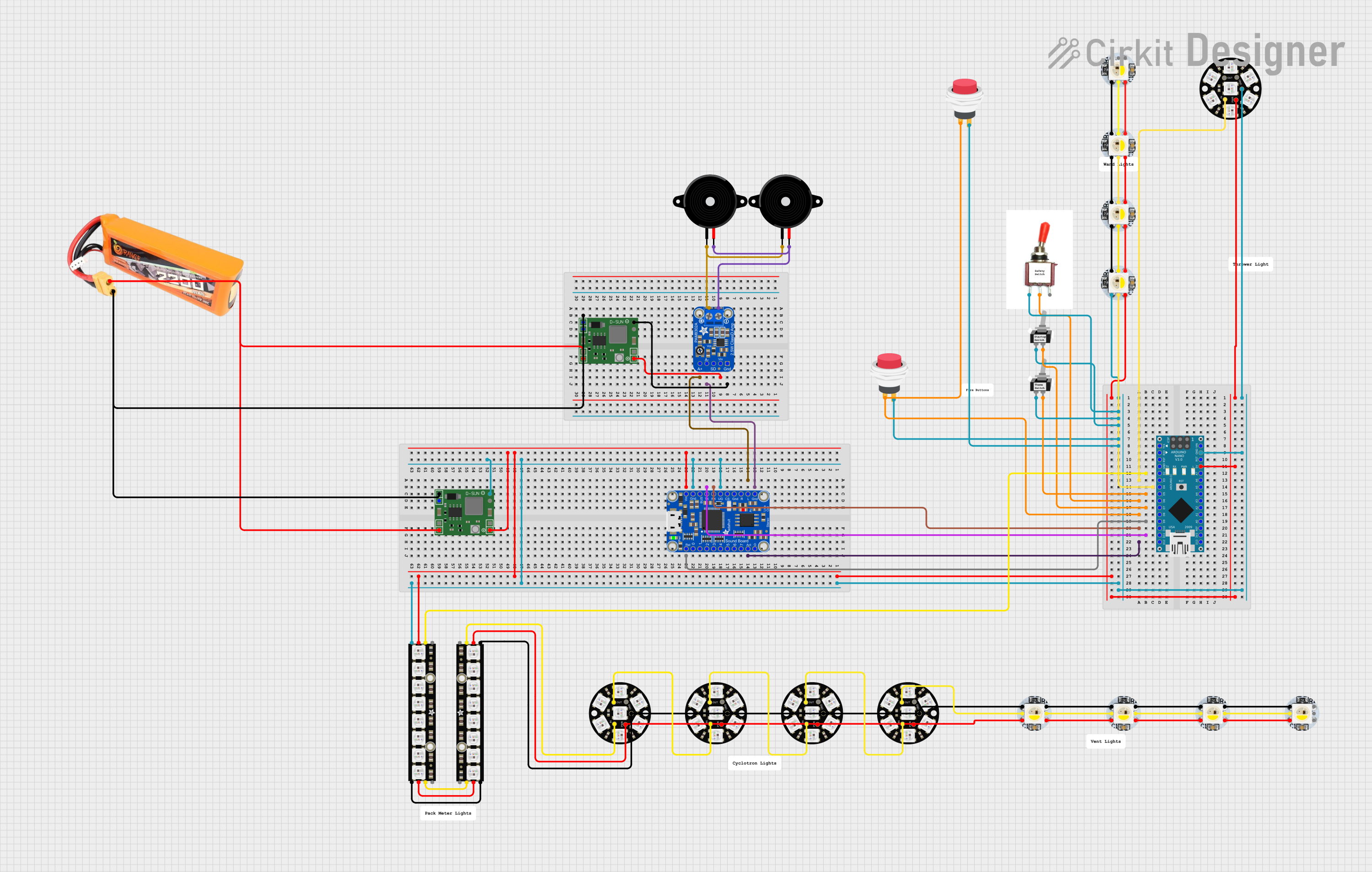
 Open Project in Cirkit Designer
Open Project in Cirkit Designer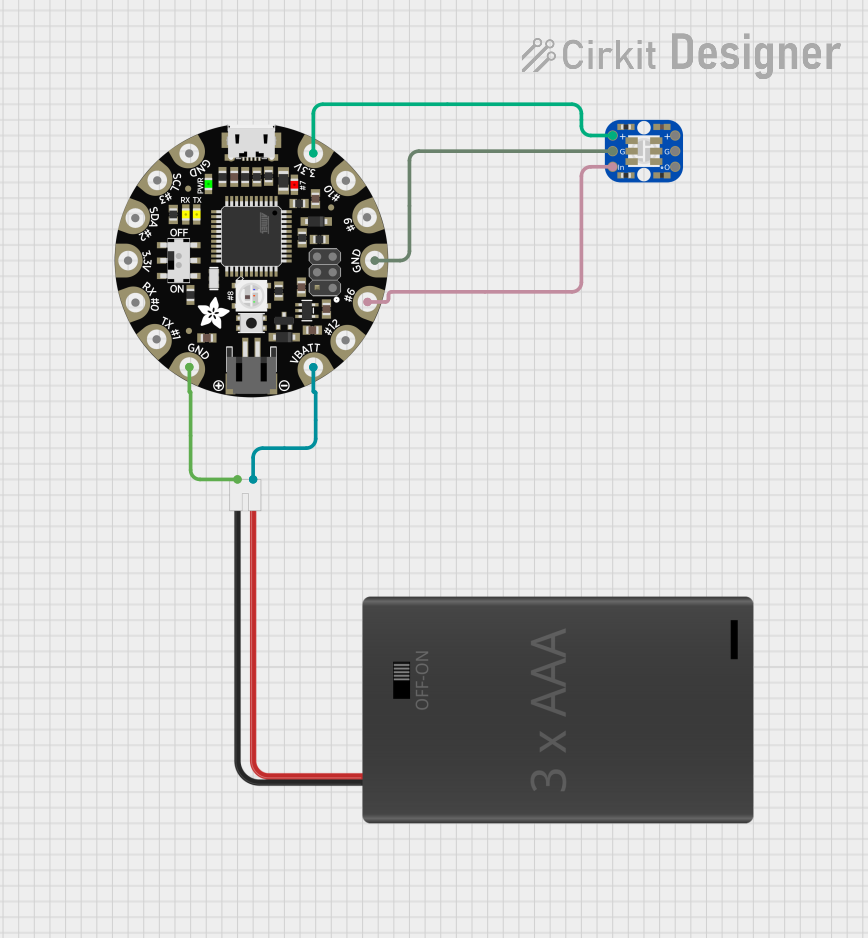
 Open Project in Cirkit Designer
Open Project in Cirkit Designer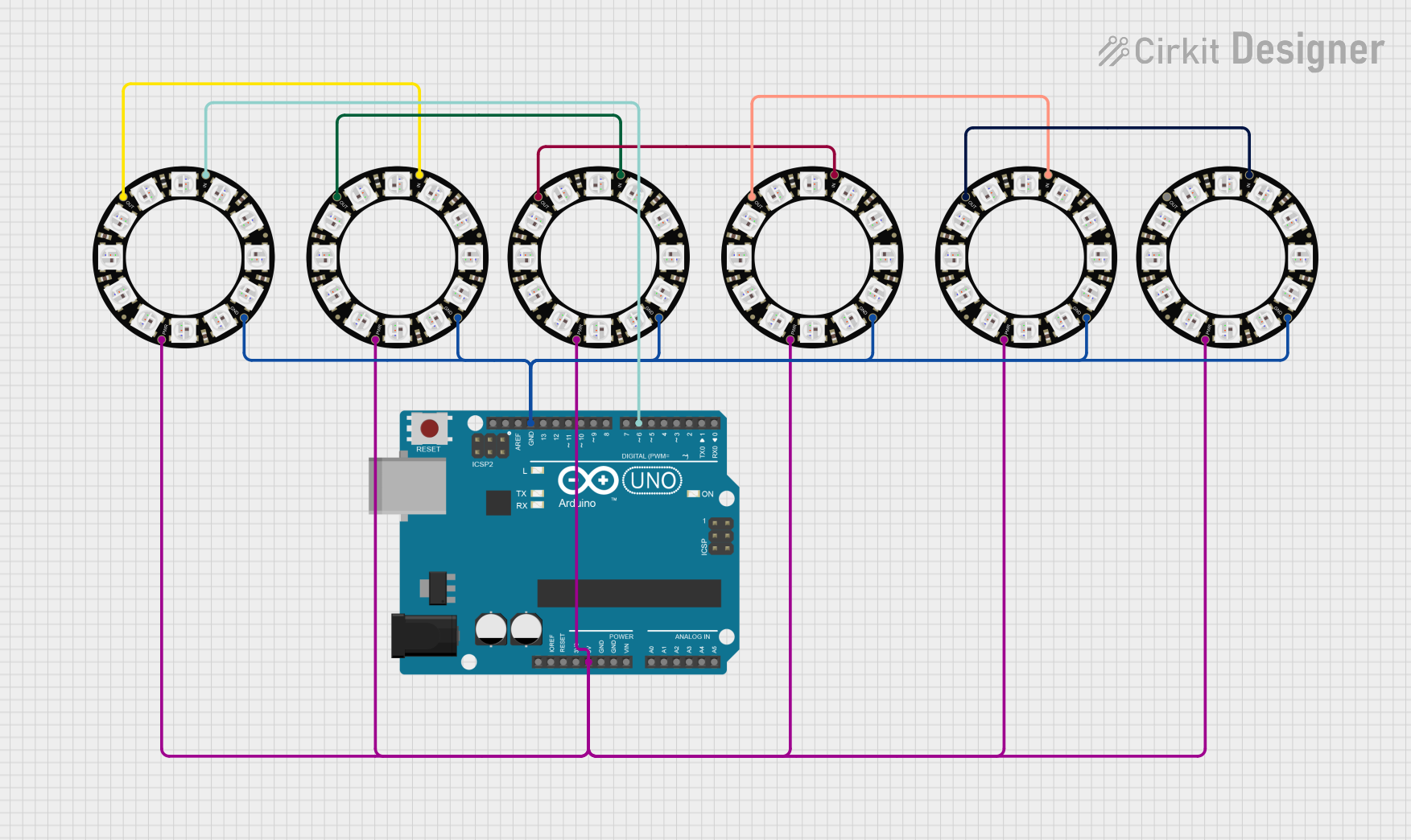
 Open Project in Cirkit Designer
Open Project in Cirkit Designer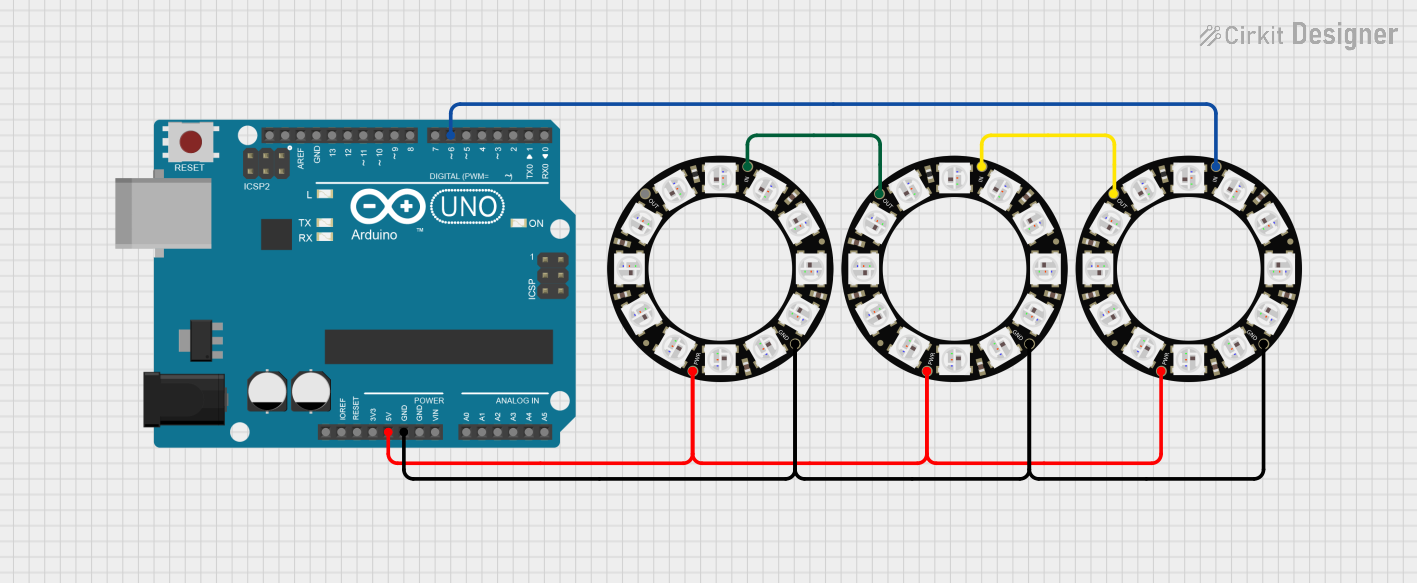
 Open Project in Cirkit Designer
Open Project in Cirkit DesignerExplore Projects Built with Adafruit NeoPixel Jewel

 Open Project in Cirkit Designer
Open Project in Cirkit Designer
 Open Project in Cirkit Designer
Open Project in Cirkit Designer
 Open Project in Cirkit Designer
Open Project in Cirkit Designer
 Open Project in Cirkit Designer
Open Project in Cirkit DesignerCommon Applications and Use Cases
- Wearable electronics and fashion accessories
- Decorative lighting
- Custom PC case modding
- Props and costumes for cosplay
- Small-scale art installations
- Educational projects teaching about LEDs and color mixing
Technical Specifications
Key Technical Details
- Diameter: 23mm / 0.9"
- Thickness: 2.5mm / 0.1"
- Weight: 2.5g / 0.09oz
- LED Count: 7 individually addressable RGB LEDs
- LED Model: WS2812 or WS2812B
- Operating Voltage: 4-7V DC
- Maximum Current: 100mA per LED at full brightness
- Communication Protocol: Single-wire (data) control (800 KHz protocol)
Pin Configuration and Descriptions
| Pin | Description |
|---|---|
| VDD | Power supply (4-7V DC) |
| GND | Ground connection |
| DIN | Data input from microcontroller |
| DOUT | Data output to the next LED/input of another NeoPixel |
Usage Instructions
How to Use the Component in a Circuit
Power Supply: Connect the VDD pin to a suitable power supply (4-7V DC) and the GND pin to the ground. Ensure that the power supply can handle the current requirements if multiple NeoPixel Jewels are chained together.
Data Connection: Connect the DIN pin to a digital output pin on your microcontroller (e.g., an Arduino UNO). If chaining multiple NeoPixel Jewels, connect the DOUT pin of the first to the DIN pin of the next.
Programming: Use the Adafruit NeoPixel library to control the LEDs. Install the library through the Arduino Library Manager and include it in your sketches to create custom lighting effects.
Important Considerations and Best Practices
- Always use a current-limiting resistor (e.g., 330-470 ohms) on the data input line to prevent spikes that could damage the first pixel.
- Include a large capacitor (e.g., 1000µF, 6.3V or higher) across the power supply lines to smooth out power supply fluctuations.
- Do not exceed 5V as it may damage the LEDs.
- Minimize voltage drop by providing power at both ends of a long chain of Jewels.
- Avoid running the LEDs at full brightness to prevent overheating and reduce power consumption.
Example Code for Arduino UNO
#include <Adafruit_NeoPixel.h>
#define PIN 6 // Define the pin connected to the NeoPixel data input
#define NUMPIXELS 7 // Number of LEDs in the NeoPixel Jewel
Adafruit_NeoPixel pixels(NUMPIXELS, PIN, NEO_GRB + NEO_KHZ800);
void setup() {
pixels.begin(); // Initialize the NeoPixel Jewel
}
void loop() {
for(int i=0; i<NUMPIXELS; i++) {
pixels.setPixelColor(i, pixels.Color(150, 0, 150)); // Set color to purple
pixels.show(); // Update the Jewel with set colors
delay(500);
pixels.setPixelColor(i, pixels.Color(0, 0, 0)); // Turn off the LED
}
}
Troubleshooting and FAQs
Common Issues Users Might Face
- LEDs not lighting up: Check connections, ensure the power supply is adequate, and verify that the correct pin is defined in the code.
- Incorrect colors displayed: Ensure the data line has a current-limiting resistor and that the ground of the NeoPixel is connected to the microcontroller ground.
- Flickering LEDs: This could be due to power fluctuations. Use a capacitor across the power supply lines and check for loose connections.
Solutions and Tips for Troubleshooting
- Double-check wiring, especially the direction of data flow from DIN to DOUT.
- Ensure that the library and board definitions in your development environment are up to date.
- Reduce the brightness in your code to lower the current draw if you're experiencing power issues.
- If using multiple NeoPixel Jewels, provide power injection at various points to prevent voltage drop.
FAQs
Q: Can I chain multiple NeoPixel Jewels together? A: Yes, you can chain them by connecting DOUT of one Jewel to DIN of the next. Ensure your power supply can handle the increased current draw.
Q: How do I control each LED individually?
A: Use the setPixelColor() function in the Adafruit NeoPixel library, specifying the LED index and color.
Q: What is the maximum number of NeoPixel Jewels I can control with an Arduino? A: It depends on the Arduino's RAM and your power supply. Each LED requires 3 bytes of RAM, so calculate based on your Arduino's specifications.
Q: Can I use the NeoPixel Jewel with a 3.3V microcontroller? A: While the NeoPixel Jewel operates at 4-7V, many 3.3V microcontrollers can still control it. However, for reliable operation, level shifting to 5V for the data line is recommended.